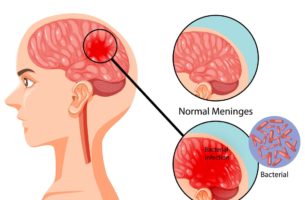10 MI (myocardial infarction) facts In this article we will describe 10 in depth facts about myocardial infarction (MI). This is mainly for health professionals. Key Points Definition: myocardial infarction (MI), or heart attack, occurs when blood flow to a part of the heart muscle is blocked, usually by a blood clot that forms in […]
Read More10 prediabetes facts In this article we well describe 10 facts about prediabetes. Key Points Prediabetes is an intermediate state of hyperglycaemia, where blood glucose levels are elevated but not high enough to meet the criteria for type 2 diabetes (T2DM). It is a reversible condition with significant potential to progress to diabetes if not […]
Read More10 anorexia nervosa facts In this article, we will describe 10 medical revision notes about anorexia. Key Points Anorexia nervosa (AN) is a serious, potentially life-threatening psychiatric disorder characterised by: self-induced weight loss, a relentless pursuit of thinness, a morbid fear of weight gain and obesity, a distorted body image, and restriction of intake relative […]
Read More10 PCOS (polycystic ovary syndrome) facts In this article we will describe 10 medical revision notes about PCOD (polycystic ovary syndrome). Key Points PCOS is a common endocrine disorder affecting reproductive-aged women It is characterised by a combination of hyperandrogenism, ovulatory dysfunction, and polycystic ovarian morphology Early recognition and management are crucial to prevent long-term […]
Read More10 NASH (non-alcoholic steatohepatitis) facts In this article we will describe 10 facts about non-alcoholic steatohepatitis (NASH). Key Points Non-Alcoholic Steatohepatitis (NASH) is a progressive liver disease characterised by fat accumulation, inflammation, and liver cell damage NASH can lead to cirrhosis and liver failure Early diagnosis and lifestyle modification are crucial Currently, there are no […]
Read MoreMeningitis – patient information We will describe 10 facts for patients about meningitis. Key Points Definition: meningitis is an inflammation of the meninges surrounding the brain and spinal cord, which can be life-threatening Microbiology: it can be caused by viral, bacterial, fungal, or parasitic infections, with bacterial meningitis being the most severe Treat as bacterial. […]
Read More10 pregnancy facts Pregnancy is one of the most wonderful aspects of life, but that does not mean we all know all about what happens. In this article we will describe 10 top tips about pregnancy. Let’s start with the basics. 1. What are the symptoms of pregnancy? If you have a regular monthly period, […]
Read More10 asthma facts We will describe 10 in depth facts about asthma. This article is mainly for health professionals. Key Points Definition: is a chronic inflammatory disease of the airways that leads to airflow obstruction Characterised: by bronchial hyperreactivity and airway inflammation Early diagnosis: and appropriate management are crucial to reduce morbidity and improve quality […]
Read More10 gout facts In this article, we will describe 10 facts about gout. Key Points Caused by hyperuricaemia, resulting in precipitation of monosodium urate crystals in and around joints, causing recurrent acute or chronic arthritis Initial attack (flare) of gout is usually monarticular and often involves the metatarsophalangeal joint of great toe Symptoms include acute, […]
Read More10 ways to help someone in hospital In this article, we will describe 10 ways to help someone in hospital. 1. Bring in useful things from home Whilst your loved one is in the hospital, it’s also a great time to bring reminders of home to their hospital room, so they can feel connected to […]
Read More



